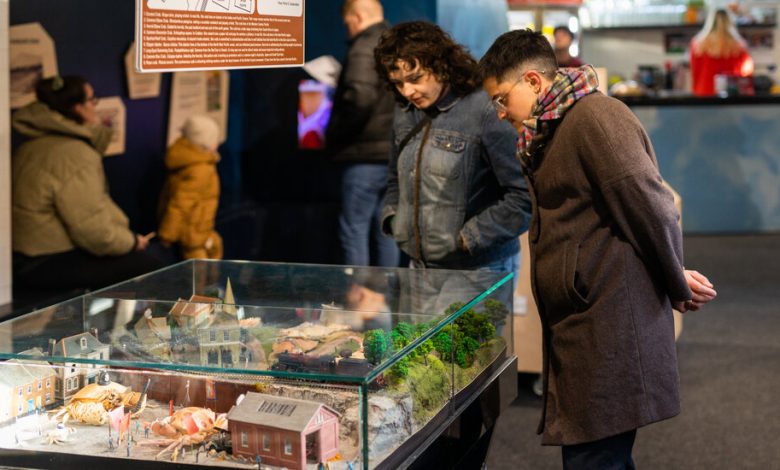This Silly Museum About Crabs Has Serious Things to Say

At the Crab Museum in the seaside town of Margate, England, Tereza Hynkova, 24, stopped in front of a display case, and started to giggle.
Inside was a diorama featuring models of nine crustaceans, including a coconut crab, usually found on tropical islands; a decorator crab, which covers its body with algae for camouflage; and the knobbly horrid elbow crab. The models were anatomically accurate, but the realism ended there. One of the crabs held a pint of beer between its claws. Another clutched a cricket bat. A third was dressed as a suffragist with a “Votes for Women” sash draped across its shell.
A sign above the diorama explained: The species live in different parts of the world so “it would be misleading to depict them in a realistic natural setting.” Instead, the museum’s staff had put the models into a diorama resembling a 1920s English town.
At a time when museums around the world are grappling with how to attract new audiences, with visitor numbers still flagging since the coronavirus pandemic began, the two-year-old Crab Museum’s use of silly humor in its exhibits and wall texts is proving to be a success. It now attracts around 80,000 visitors a year and recently won an award for its social media presence, which it uses to sell jokey merchandise including T-shirts and tote bags.
Much of the humor is childish, and aimed at young visitors. A section on mating habits, for instance, features a photo of crabs midcoitus, emblazoned with the word “censored.” Other elements are more involved. To illustrate how the animals “molt” — a process in which a crab pulls its body out of its shell so that it can then grow a larger exoskeleton — the museum has a bizarre video of Ned Suesat-Williams, one of its founders, struggling to crawl out of a suit of armor backward, without using his hands.
The museum’s text and graphic-led exhibits try to teach visitors about crab anatomy, mating habits and the importance of decapods to marine ecosystems, but also use crabs as ways into discussing bigger issues, including environmental threats and the inequities of capitalism and colonialism.
We are having trouble retrieving the article content.
Please enable JavaScript in your browser settings.
Thank you for your patience while we verify access. If you are in Reader mode please exit and log into your Times account, or subscribe for all of The Times.
Thank you for your patience while we verify access.
Already a subscriber? Log in.
Want all of The Times? Subscribe.
